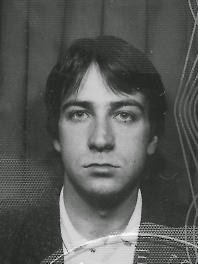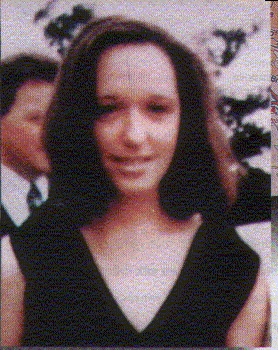 |
| Fiona Pender |
It’s likely that Mark Dowling’s friends were sure he’d be back within minutes. In March 1984, after the 20-year-old Dublin man and his pals stepped out of his vehicle to inspect some minor damage, Mark climbed back in to the car and drove off. In the thirty years since, Mark Dowling, a successful and seemingly happy young man who was about to get married, has not been seen or heard from, leaving his distraught family and friends clueless as to his whereabouts. Neither extensive searches in the Dublin area and beyond, nor widespread media coverage at the time and since have yielded any information with regards to his disappearance, and to this day, he remains one of Ireland’s many missing people.
The case of Mark Dowling is not an isolated one. On average, five people are reported missing in Ireland every day, leading to anywhere up to 2,000 individual cases each year. Of these, a considerable majority will have left voluntarily, perhaps unhappy or depressed, or they may simply have needed some time alone, and would return home within days, or even hours.
A smaller number are found deceased after several days or weeks, having either been involved in a fatal accident, chosen to take their own lives, or even been murdered. Of the remainder still unaccounted for, most, will have disappeared against their will, while some have simply vanished, leaving no clue as to any suspicious activity that may or may not have been involved in their leaving.
 |
| Ciara Breen |
In the mid to late 1990s, over a dozen women vanished without trace in Ireland and were not, or at least have not yet, been seen alive since.Others, such as Antoinette Smith, a 27-year-old mother of two from Dublin, Patricia O’Doherty, a thirty-year-old prison officer, also from Dublin, and Marie Kilmartin, a 34-year-old woman from Portlaoise, were missing for months before their bodies were discovered.
All three had been murdered and their bodies buried in shallow graves in rural areas. All three cases remain unsolved.
Six other women, namely Ciara Breen (from Louth), JoJo Dullard (Kilkenny), Deirdre Jacob (Kildare), Fiona Pender (Offaly), Fiona Sinnott (Wexford) and Annie McCarrick (an American living in Dublin), have received much media coverage, as it is generally suspected that they were also the victims of violence. Without a body however, there is no crime scene, and therefore no evidence, leaving investigating Gardai encountering major obstacles in attempting to solve the cases.
 |
| Mark Dowling |
The other missing women, including; Eva Brennan (Dublin), Sandra Collins (Mayo), Ellen Coss (Dublin), Imelda Keenan (Waterford) and Michelle McCormick (Cork City), while their respective disappearances have been no less devastating for their families, little evidence has suggested suspicious activity being involved in their particular cases.
The arrests and imprisonment of two men in seemingly unrelated cases, has however, given investigating Gardai, and the general public, a glimmer of hope, with regards to the ongoing mystery of missing people in Ireland. John Crerar, a former army sergeant, was 53 when found guilty of the rape and murder of Phyllis Murphy, a young woman from County Kildare, whose body was found over two decades earlier, following a lengthy search by Gardai and members of the public. Due to a diligent young Garda who thought ahead and held onto vital evidence “just in case”, Crerar’s DNA was linked to Miss Murphy’s killing, and twenty-three years after her body was found, he was jailed for life.
Larry Murphy meanwhile, a 36-year-old carpenter and father of two from Wicklow, was imprisoned in 2002, having been charged with the brutal rape of a woman, after being seen leaving the scene of the attack by two hunters deep in the woods of west Wicklow.
A courtroom heard eleven months later how Murphy had attacked the woman in a car park in County Carlow, breaking her nose with a punch before bundling her into the trunk of his car. He drove for several miles to Athy, County Kildare, where he raped the woman, and did so again after driving to Kilranelagh, County Wicklow. After producing a black plastic bag which he placed over the woman’s head, he was interrupted by hunters Trevor Moody and Ken Jones, who arrived on the scene, and went to the rescue of the woman. He was arrested at his home the next day, after Moody and Jones, who both recognized him, gave his name to the Gardai.
What is worrying about Murphy’s case is that he had never once come to the attention of the Gardai, though officers are aware that he lived just five miles from where JoJo Dullard was last seen alive, and was working in Newbridge when Deirdre Jacob vanished, leaving some to speculate about other crimes he may have committed. Author Michael Sheridan, believes there may be a link between Crerar and Murphy. In his book ‘Frozen Blood’, he claims that one woman who knew Crerar, informed him that she often saw him coming in and out of a disused quarry in Kildare at various times, digging and burning items, and on one particular night, just after one of the missing women vanished, she heard “horrendous screams” in the middle of the night coming from the quarry, where she had earlier seen Crerar arguing with a younger man, whom the woman believes may have been Murphy.
These two violent men, as well as other similar perpetrators of infamous crimes against women in Ireland, such as *Michael Bambrick, David Lawler, Sean Courtney, Kenneth O’Reilly, John Cullen, Peter Whelan and Mark Nash, all currently languish in prison, and while there’s a great chance that all, or at least some of them, know more than they’ve admitted to, there’s little or no hope that they’ll ever shed light on other women they may have attacked or killed, for fear of being handed additional sentences.
 |
| Michael Griffin |
It is not just Irish women, or indeed, women in Ireland, who have vanished. In September 1986, Michael Fergus Griffin left Dublin to go and work in New York. Like many thousands before and after him, the 27-year-old had no work permit or visa, and during his first year abroad, his family heard from him intermittently, with just the occasional phone call home. The calls stopped in 1987, and have not resumed. In December of 1993, his passport was returned to the Irish passport office with no note attached, and Michael, who worked in a hardware store in Great Neck, Long Island, has not been heard from since.
Tragically, there are many more such cases of Irish people vanished without trace. Currently, there are 71 separate cases listed on www.missing.ie, the missing persons website created and painstakingly researched and updated by Irish Catholic priest, Father Aquinas Duffy, who established the site after his own cousin, 20-year-old Aengus (Gussie) Shanahan, vanished from Limerick in February 2000.T
During the fourteen years of its existence, the site has been at least partly responsible for highlighting the plights of hundreds of missing persons’ cases, and to date, 104 missing persons who were at one stage featured on the site, have been found (38 alive and 66 deceased).
Father Duffy’s online presence, as well as including vital links to other similar sites, and advice to those who may be missing, or know of the whereabouts of missing persons, goes into detail with regards to each case, and also includes contact details for local and national help groups and law enforcement agencies.
 |
| JoJo Dollard |
The missing persons issue in Ireland is not restricted to one gender, age group, time-frame or geographical area.There have been cases reported of missing children, such as the heartbreaking cases of young Donegal girl Mary Boyle, who vanished in 1977, and teenager Rory Ahearne, not seen since leaving his home in Dublin in 1984, middle-aged individuals such as Frank Courtney of Tralee, who disappeared in February 2002, John O’Hara (Limavady, 1994), Tony Brosnan (County Limerick, 2003), and older Irish citizens, such as Bernie Gavan, the Ballymun woman who’s not been seen since August 2007, and Alpho O’Reilly, the Dublin man who’d now be 88-years-old, who disappeared in 1996.
It is an issue that knows no boundaries, with international cases such as John Rowan, the Kildare man last seen in Florida in February, 2001, Daniel Ryan from County Clare (New York, in August 1988), Paul Roche, the Wexford man who went missing in India in June, 1996, Hugh Nolan, the Cavan man who’s not been seen since his time spent working in San Francisco in April, 1994, Richard Nagle, the 26-year-old man who vanished in France in 2007, and James Patrick Grealis, a 24-year-old man who went missing in the Netherlands in October, 2008.
 |
| Deirdre Jacob |
There were the high-profile cases which seemed to have been permanently imprinted upon our memories, such as that of JoJo Dullard, the 21-year-old Kilkenny woman, who vanished while hitching a ride home from Kildare in 1995, Fiona Pender, the 25-year-old part-time model, who was seven months pregnant when she was last seen shopping near her home in Tullamore, County Offaly, Ciara Breen, the teenager who vanished from her Dundalk home in 1997, leaving behind her heartbroken mother, Philip Cairns, the Dublin schoolboy who never arrived back at school following a lunch break in October 1986, Pearse Cremin, the County Cork tennis coach who’s not been heard from since October, 2000, Amy Fitzpatrick, the 15-year-old Dublin girl who went missing in Spain in 2008, Fiona Sinnott, the 19-year-old Wexford woman who was very much looking forward to the first birthday of her daughter Emma before she was last seen in 1998 and the shocking case of Conor and Sheila Dwyer, an elderly Cork couple last seen at St. Patrick’s church in the town in April 1991. A subsequent search of their home located all their personal papers and passports, although their car, a white Toyota Cressida, has also not been seen since that date.
With new housing estates being built across the country on previously derelict and rural land, which could well have been used as makeshift burial grounds, during Ireland’s so-called ‘Celtic Tiger’ years, many of those missing people feared murdered, may never be found.
Add to that an efficiency in disposing of victims that criminal gangs have developed, and the missing persons issue in Ireland seems here to stay.
For more information on Ireland’s missing people log on to Father Aquinas Duffy’s missing persons’ site at
www.missing.ie, *Note: Michael Bambrick, Sean Courtney and Larry Murphy have all since been released from custody.





Whilst there is no doubt that many have been murdered for one reason or another such as Fiona Pender and others I strongly believe for reasons I know of personally that many young people have been abducted killed by ChurchState for Organ Harvesting – many just abducted reported as missing – many suicides – I have been threatened to kill myself or be tortured since I first starting talking about this – it is Jobs for Pharma in exchange for human life..Govt and Catholic & Jehovah Witnesses churches are involved…check out mass graves – they were all specimens for pharma industry – I cannot make anyone believe me but the fact that no one questions this is my answer – everyone knows and are involved in the silent holocaust for pharma industry – there is no safety or freedom in Ireland – Deirdre Jacobs is a classic example of how priests dragged good looking women off the streets and shunned them away to be raped and tortured – Do you honestly think for one moment anything has changed 2016..
You are wrong we did it
Terri can u email me? Suzienicol17@gmail.com
Hi Suzie, The Heraldy Press’s Admin here, were you looking for info regarding the missing persons articles?